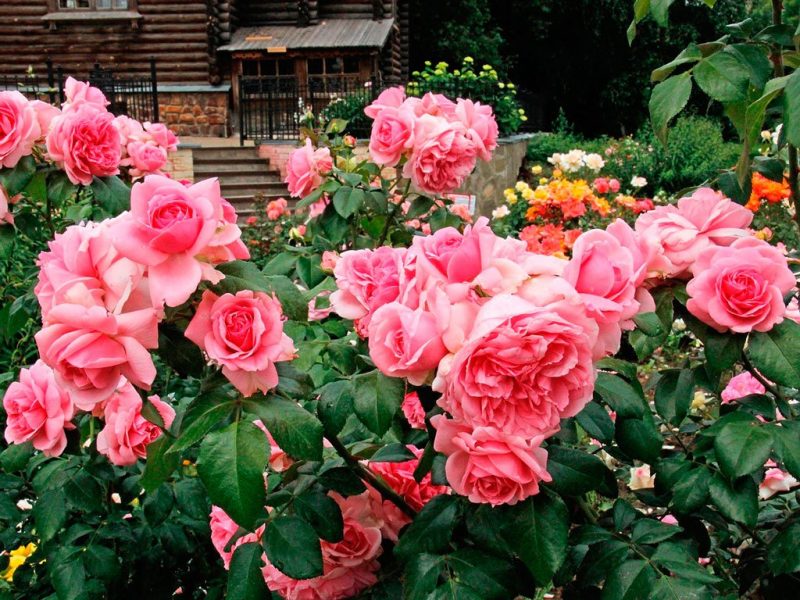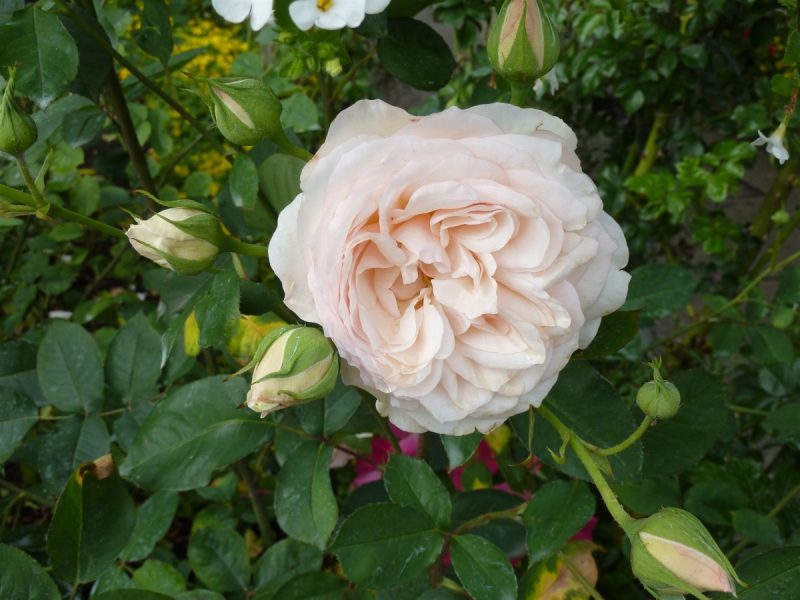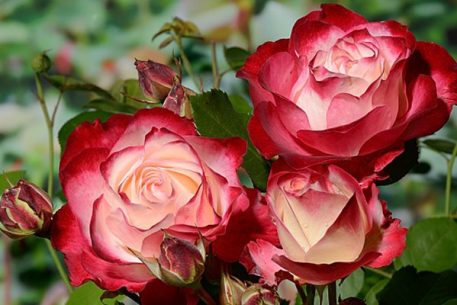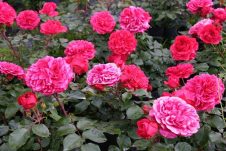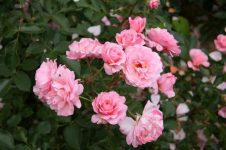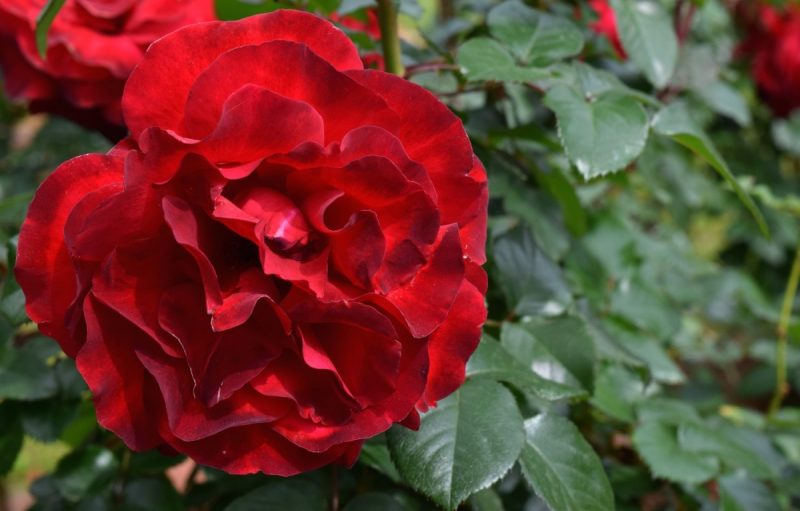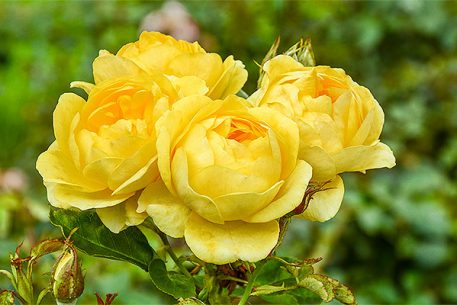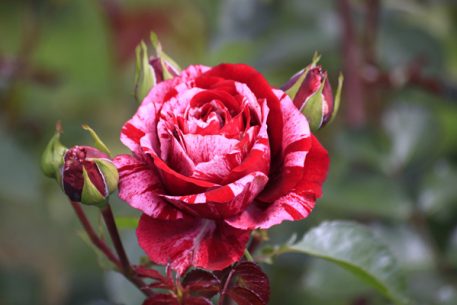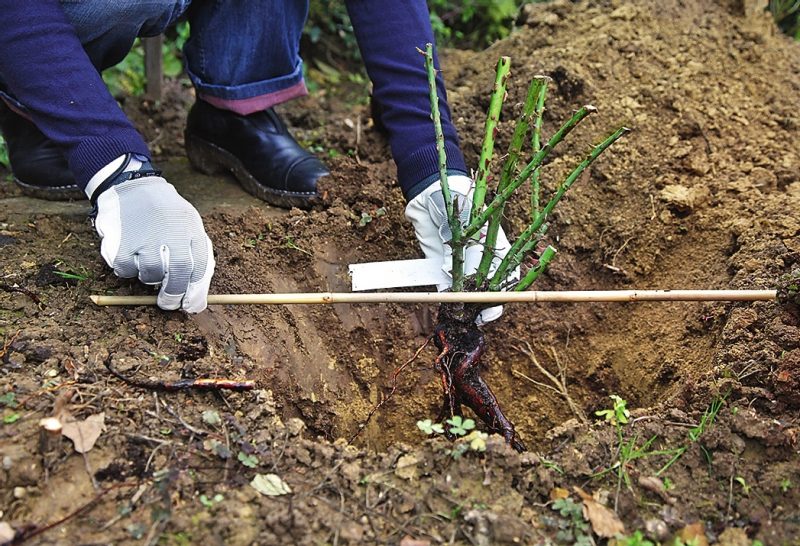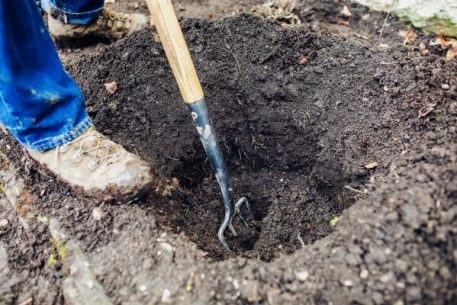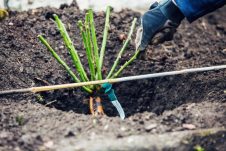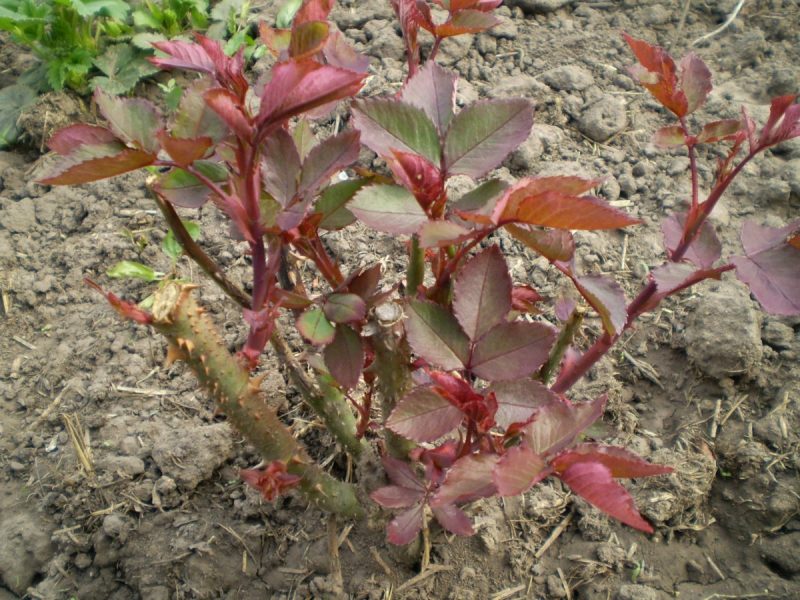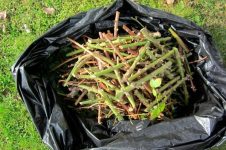A relatively new group of varieties of "Queen of the Garden" successfully combines the beauty of tea-hybrid and Pernetian roses with polyanthine stamina. The most noticeable distinguishing feature of the Floribunda rose is its multiflowering (from 10 to 30 buds are formed on one branch). Gardeners like the variety and richness of petals in varieties of this class, as well as the minimum requirements for care.
Material Content:
- 1 Rose Floribunda - what is this flower?
- 2 Description of varieties
- 2.1 Brief description of varieties Floribunda with white flowers
- 2.2 Varieties of Floribunda with pink buds
- 2.3 Varieties of Floribunda with red petals
- 2.4 Varieties of floribunda with yellow flowers
- 2.5 Varieties of Floribunda with Orange Petals
- 2.6 Varieties of Floribunda with a passing and variegated color of flowers
- 3 Site selection and soil preparation
- 4 Landing at the cottage
- 5 Care and growing flowers
- 6 How can I propagate
- 7 Disease and Pest Prevention
- 8 Use in landscape design
Rose Floribunda - what is this flower?
The name of the group comes from Latin words meaning "plentifully flowering". In nature, the Floribunda rose never existed. The creator of the first specimen is considered the Dane S. Poulsen, who in 1911 introduced a bush rose with inflorescences of the "bouquet" type, resistant to the cold winter of Scandinavia.
Experts explain what it is - Floribunda roses, by comparison with the parent plants. Offspring combines unpretentiousness, stability and flowering nature of large-flowered polyanthus and the beauty of tea-hybrid roses. Breeders have worked hard to increase the resistance of flowerbed specimens to low temperatures and diseases.
In the description of the rose, such signs as diameter, flower shape, number of petals and color are important. Knowing the main characteristics of the variety helps gardeners and gardeners save time when choosing seedlings.
Individual flowers of the Floribunda group roses are cup-shaped, goblet-shaped or flat, smaller in size than tea hybrids. The number of petals is from 10 to 25. The buds are collected in racemose inflorescences of 5-30 pieces. Groups with white, yellow, orange, pink, red, violet color are distinguished. There are blends with a smooth transition, with stripes.
The height of the bushes varies from 35 to 120 cm. On this basis, roses belong to one of three subtypes: undersized (up to 40 cm high), medium-tall (60 to 80 cm), high (over 100 cm). The last group requires sufficient area for cultivation. Low floribunda (30–40 cm) belong to the group of border roses.
Description of varieties
S. Poulsen Nursery is working towards creating Floribunda with large "bouquet" type inflorescences. New tall varieties (100–150 cm) are suitable for use as a tapeworm on the lawn, in compositions with ground cover and herbaceous perennials. Flowering occurs "waves."
Flower varieties, in the creation of which the Pernetsian roses took part, are distinguished by relatively large buds. The height of the bushes is from 80 to 100 cm. The color of the petals is dominated by golden yellow and orange-red tones, the leaves are hard and glossy, with shades of copper.
Brief description of varieties Floribunda with white flowers
"Aspirin Rose". Rose bush of the Aspirinovaya variety is of medium height, dense, almost spherical in shape. Buds starting to bloom have a pinkish core, fully opened - snow-white, collected 5-15 pieces in dense racemose. The diameter of terry flowers is from 6 to 8 cm. In frosty winters, the bush needs shelter.
Margaret Merril. The flowering nature of this variety resembles hybrid tea roses. The flowers are large (up to 10 cm), semi-double, cup-shaped. The color of the outer petals is white, the core is pale pink. At first, single buds open, later brushes carry 5–10 strongly aromatic flowers.
The white color of rose petals in cold climates often changes to pink.
"Schneewittchen". White, semi-double flowers, with a diameter of up to 7 cm, are collected 5–20 pieces in inflorescences. Roses of this variety have a moderate or strong aroma. In central Russia, flowers appear in two “waves”. The rose is undemanding to care, easily propagated by cuttings. Bushes tolerate frosts down to −30 ° C.
Varieties of Floribunda with pink buds
"Kimono" is a tall bush. In inflorescences, 5–20 pink buds bloom. Variety "Kimono" can be used for cutting.
"Leonardo da Vinci." The flowers are light pink or purple-pink, double. Bushes are powerful, up to 1.5 m high. Flowering is continuous. Unfortunately, the smell is weak or absent.
"Botticelli." Large light pink flowers have no aroma. The bush is medium tall, dense, compact. Flowering continues continuously from June to October.
"Anniversary of the Prince of Monaco." Half-opened buds are white-pink in color. The color of the border gradually changes from raspberry to cherry.
Varieties of Floribunda with red petals
"Lilli Marleen." Dark red flowers are collected in 15 pieces in tassels. The height of the bushes varies from 50 to 70 cm. Flowering continues until frost. Resistance to diseases is high.
"Eye Paint." The flowers are bright red, with a lighter center. Brushes contain 10-30 buds.
Varieties of floribunda with yellow flowers
Golden Wedding. The flowers are large, slightly aromatic. The bush reaches a height of 80 cm. The variety is resistant to disease.
"Samba". Terry flowers, golden yellow, have a reddish border. Bushes of medium height, bloom for a long time, resistant to low temperatures, infections.
Varieties of Floribunda with Orange Petals
"Traumerei." The flowers are large (8–9 cm), terry. The color of the petals is coral-orange. At the beginning of flowering, single buds appear, then 3–7 pieces bloom on one brush. A fragrance of medium intensity or strong.
"Anne Harknes."Orange-yellow flowers of medium size appear in the second half of summer. On one branch, up to 20 buds open. The variety is resistant to damp, cold.
Varieties of Floribunda with a passing and variegated color of flowers
"Heidi Klum". Dense flowers have a lilac or pink-violet color, a magnificent strong aroma. The bush is stunted (40-50 cm), narrow. The variety is plentiful and long blooming, resistant to disease, rain. Can be grown on flower beds and in containers.
"Sheila’s Perfume." In one brush - from 1 to 3 semi-double flowers with yellow-red petals. The aroma is strong. The average height of the bushes is 80 cm.
The variety is selected depending on the desired color of the flowers, the preferred size of the bushes. Be sure to take into account the size and purpose of the site, the type of soil, microclimate.
Site selection and soil preparation
Roses love well-lit areas, without drafts. The position on the south side of the building is undesirable due to the risk of sunburn. The air must be fresh so that the leaves and buds that are wet after rain dry quickly. Waterlogging contributes to the development of fungal infection.
It should be noted that the soil in the rose gardens accumulates “fatigue”, so roses do not grow for a long time in the same place. If it is not possible to change the site, then on the former they replace the substrate to a depth of 50 cm or the existing soil is enriched with compost by 1/3.
Floribunda needs not too light, but well-permeable soil, rich in nutrients.
The soil should not be swampy or dry. Favorable pH values of the substrate for roses are close to neutral indicators (6.5–7.5). If the content of humus, sand and clay is not balanced in the area, the required soil composition is provided during the planting of bushes. For container culture, you can purchase a ready-made substrate for roses.
Landing at the cottage
Adult Floribunda rose bushes may have good frost resistance, however, seedlings are more sensitive to low temperatures. Therefore, they choose the time for planting in the spring, after the last frost. It is not recommended to pour dry granular fertilizers into the pit.
The process of planting Floribunda bush roses:
- They dig a hole, the depth and width of which is several centimeters larger than the size of the root system of the seedling.
- Place the bush so that the root neck is buried in the soil by 2-3 cm.
- They straighten the roots, pour part of the prepared water, fill the pit with soil, compacting and knocking along the edges.
- After planting, the bushes are watered, the soil around is mulched with peat or other suitable material.
It is advisable to cover young plants in the first days after planting in order to protect them from the cold at night. Floribund roses reach full maturity in the third year of life.
Care and growing flowers
Floribundas are less demanding of conditions compared to hybrid tea roses. Change of sunny days with rainy and cloudy weather, sudden cold snap does not cause falling inflorescences.
Roses of this class prefer infrequent loosening of the soil and moderate watering. Settled water, comfortable for plants, is poured directly under the bush once a week. Watering is performed in the morning.
In spring and autumn, the soil under the bushes is enriched with compost (6 kg / m2) And also in spring they use calcium nitrate for liquid top dressing combined with watering. Fertilizers for roses in liquid form, it is advisable to make at least two times during the warm season. However, one should not “get carried away” with saltpeters - an excess of nitrogen is harmful to roses.
Gentle pruning - a guarantee of preservation of vitality and abundant flowering of roses.
In the first year after planting on strong shoots, the Floribunda leave 5 buds, on the weak - 3. In the next season, last year's shoots are shortened by 1/3. Lateral branches are cut, leaving 2 or 3 buds. Damaged parts are removed 7-8 mm above a healthy kidney, and a "wild" shoot is cut out.
In the future, the shoots of the last year are shortened by 1/3, and 3-5 buds are left on biennials.Every 4 years, anti-aging pruning is performed. Old lignified branches are completely cut.
Seasonal care and growing:
- In warmer regions, pruning is performed from late March to mid April. If the bushes were sheltered for the winter, then open the rose in April or May, and then pruning.
- In the summer, weeds are promptly weeded, watered and fed with bushes. Drying flowers, damaged and dry leaves, twigs are cut off so that the roses retain nutrients and energy for opening new buds.
- In autumn, the flowering of most varieties lasts until October. In warmer regions, roses can be planted in November.
- In winter, varieties less resistant to frost need shelter.
Before the frosty season begins, they dig up the soil to create a neat cone around the remains of the bush. In cold regions, they are additionally mulched with straw or fallen leaves, covered with agrofibre or pine branches from above.
How can I propagate
The simplest and most preferred ways to increase the number of Floribunda rose bushes are planting cuttings and dividing. Woody pieces of shoot with two or three buds are harvested from well-developed plants. Dip in a special solution to improve root formation for 3-4 hours. Cuttings planted in the ground are covered on top with a plastic bottle with a cut neck or a glass jar. Planted in permanent places after rooting.
Floribunda roses can be propagated by division, in spring or autumn. They dig up the bush, cut the root system into 2-3 parts so that each has well-developed roots and shoots. Planted in a permanent place, watered.
Disease and Pest Prevention
It is interesting:spider mite on indoor plants: how to deal
Breeders breed resistant Floribunda cultivars, but infection with pathogens and disease must be prevented. The most common infectious diseases of flower beds with inflorescences are fungal. To prevent infection with powdery mildew and peronosporosis, they are sprayed with an infused broth of field horsetail or nettle shoots. Bushes infected with the fungus are treated with Topaz or Profit.
Be sure to disinfect the used garden tools with alcohol or a strong solution of potassium permanganate, burn the affected leaves and shoots.
Noncommunicable diseases are usually associated with inadequate care and aging of plants. In the second case, it is necessary to conduct anti-aging pruning or remove old bushes. To prevent nutritional deficiency, 2 feeding of phosphorus-potassium fertilizer with trace elements is carried out.
The worst pests of roses are green aphids, spider mites, thrips. Affected shoots must be cut and burned. In case of mass infection, roses are treated with the insecticidal preparations Actellik, Fitoverm, Actofit.
Read also:Actellik - instructions for use
Use in landscape design
Modern roses of Floribunda group are used in flower decoration of household plots and summer cottages, in group plantings, they are used for distillation, for cutting, for growing in pots. Plants of this group adorn the main entrances to offices and residential buildings. Abundantly flowering bushes can be seen in the composition of borders, rabatok, mixborders.
Roses in the foreground of a combined hedge look beautiful. For roses, you can plant arborvitae or junipers. As a tapeworm, a tall Floribunda variety is usually used. Low rose bushes with inflorescences in containers are very convenient for creating a mobile rose garden.
Floribunda, densely strewn with bright flowers collected in inflorescences, create a festive mood. Compact, densely leafy bushes harmoniously look on a flower bed and in containers. A great advantage of Floribunda roses is its long flowering, which lasts from June to October.


